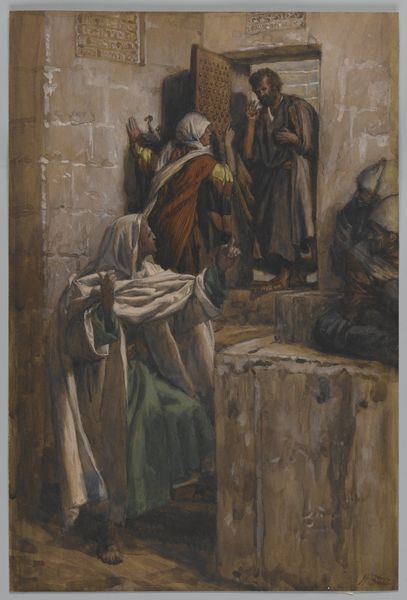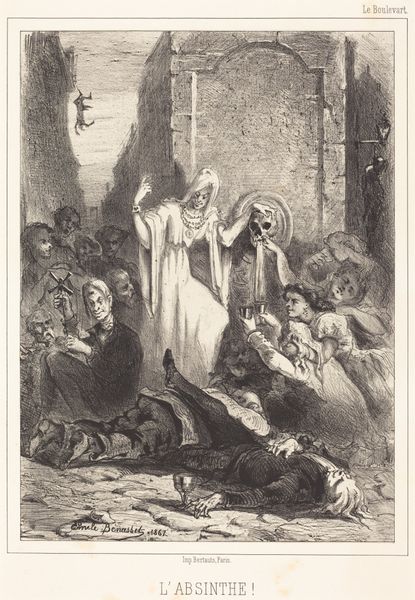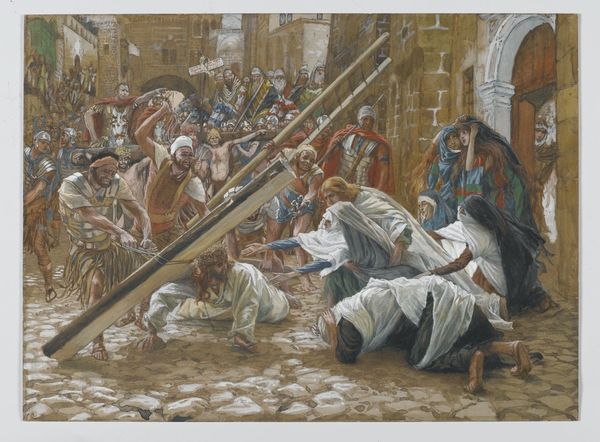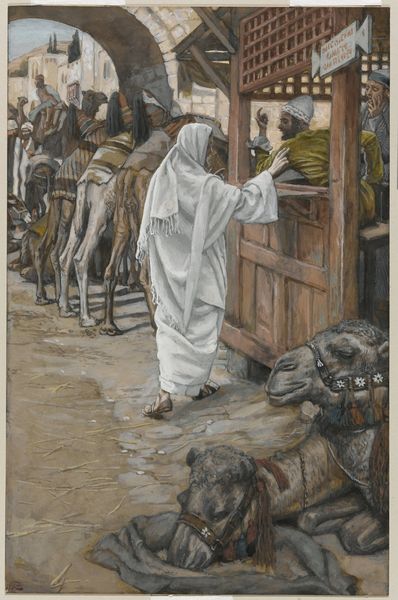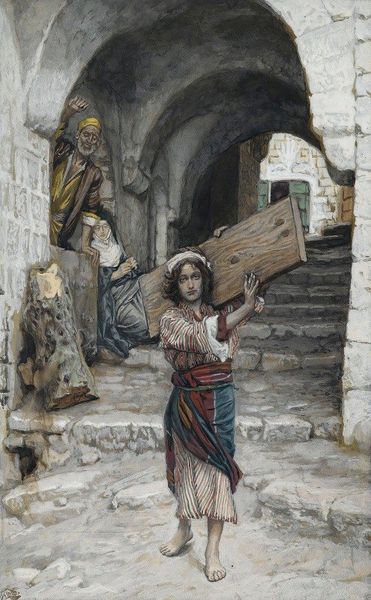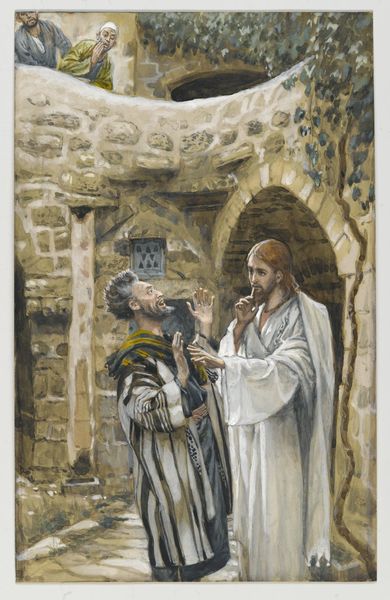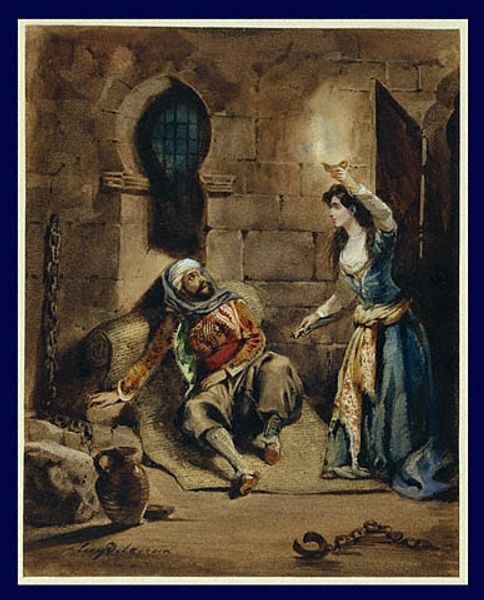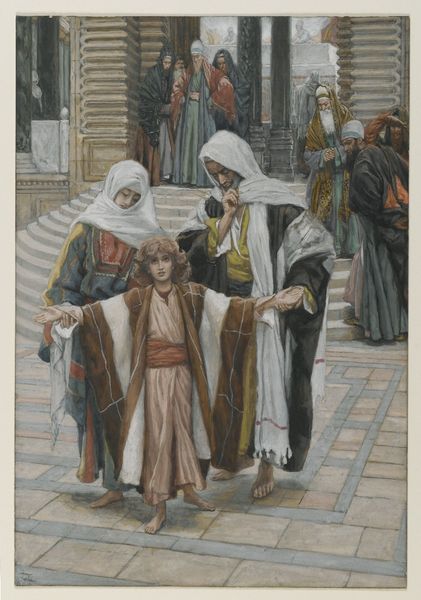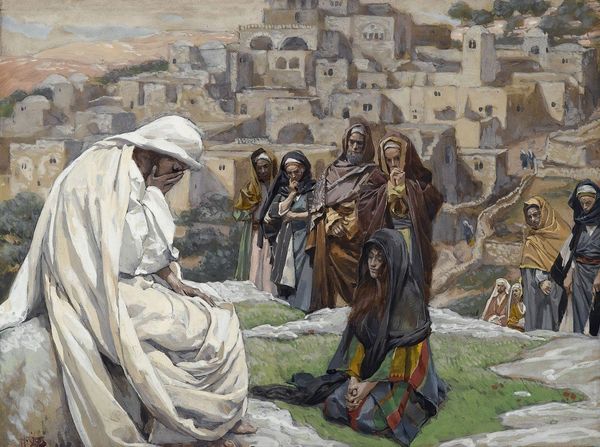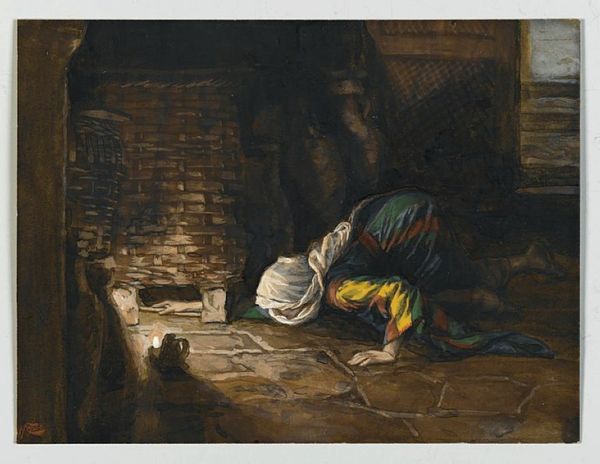
The Return of the Prodigal Son, illustration for 'The Life of Christ' 1896
0:00
0:00
Copyright: Public domain
Curator: James Tissot painted "The Return of the Prodigal Son" in 1896. It is a watercolour illustration currently residing at the Brooklyn Museum. It evokes a palpable sense of relief, don't you think? Editor: Absolutely. The scale feels intimate, focusing sharply on the emotional core of this famous biblical scene. The subdued palette contributes to the mood. It is really about homecoming. The broken cobblestone beneath their feet speaks to struggle and return. Curator: Tissot really understood how to use symbolism to amplify the story. The prodigal son's ragged clothes and posture versus the father’s open embrace speak volumes about forgiveness and unconditional love, right? And also rebirth: there is that clear physical separation from his former identity through the discardment of material goods and his bodily language. Editor: I’m drawn to the bystanders; their presence raises questions about community acceptance, power dynamics and the conditions of social belonging. It prompts a critical gaze, considering the layers of societal judgment the returning son might encounter. Will they welcome him without reservation, or will old prejudices linger? Curator: That's a crucial point! Think about how this scene resonated then, and still does now. The universal themes of sin, repentance, and divine grace remain powerful archetypes. Tissot cleverly highlights this enduring resonance through relatable human interaction. We still read similar situations everywhere. Editor: Tissot clearly situates it in a real social context rather than a heavenly abstraction, humanising a central motif of reconciliation. But what do we miss or minimise when we solely concentrate on forgiveness without actively addressing systemic causes of disparity or when only individual acts of repentance occur? Curator: This artwork acts as a potent reminder about the visual markers we all bring to the understanding of timeless parables. I see it as a reminder that hope persists in even the darkest moments of transgression. Editor: For me, Tissot encourages us to scrutinise these encounters, looking beyond the comforting narrative of redemption and really probe at the social and political environments where these "falls" from grace transpire.
Comments
No comments
Be the first to comment and join the conversation on the ultimate creative platform.
